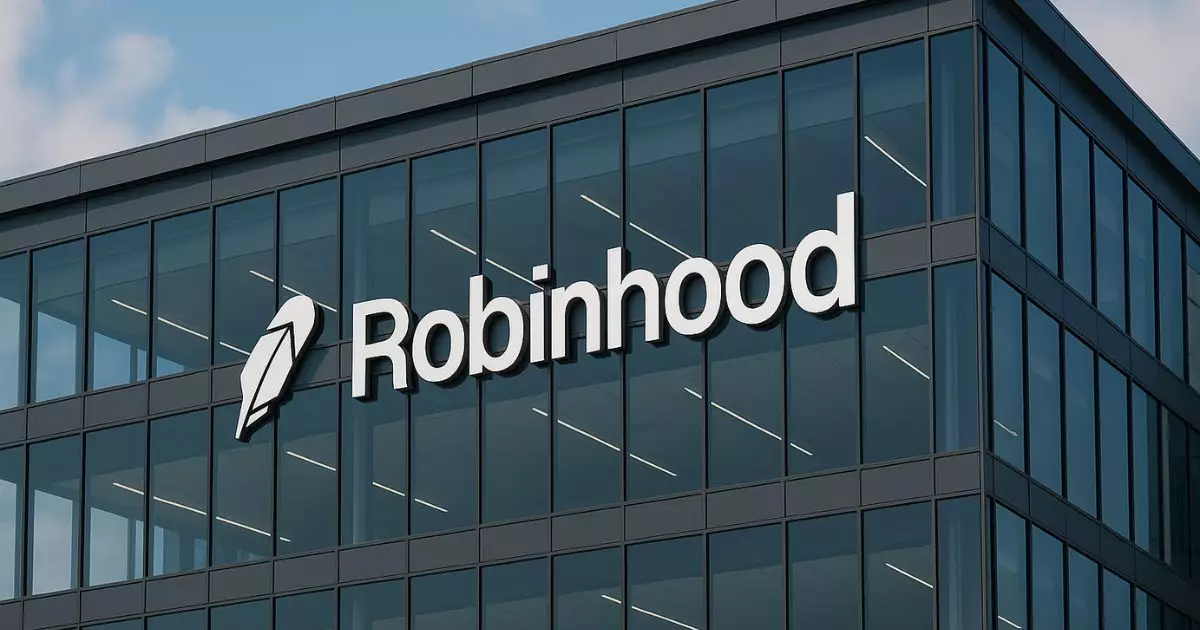In a striking move that could reshape the financial landscape, Robinhood has presented a comprehensive proposal to the U.S. Securities and Exchange Commission (SEC) aimed at establishing a federal framework for tokenized real-world assets (RWAs), a market that Forbes estimates at an astounding $30 trillion. This is not merely an incremental adjustment; it represents a seismic shift in how we perceive and interact with assets, challenging entrenched systems that have long dictated the flow of capital.
At the heart of Robinhood’s initiative is a bold assertion: that digital tokens, which represent traditional financial instruments such as equities, bonds, and real estate, should be treated equivalently to their underlying assets. This is a radical proposition that, if embraced, could dismantle the existing barriers that often restrict efficient asset trading and settlement. The truth is that our current approaches are outdated and fragmented, serving more as experiments within regulatory sandboxes than as viable frameworks for mass adoption.
Towards a Unified Framework
Robinhood’s proposal is not an isolated endeavor; it is an invitation for collaboration and coherence in an industry that has thrived on disarray. The company emphasizes the need for a unified national framework that would empower broker-dealers to issue and trade tokenized securities under a standardized compliance model. The elimination of parallel systems could significantly enhance operational efficiency, allowing for a more agile response to market dynamics.
This call for integration is not simply a pragmatic necessity; it’s a vision of what modern finance should look like. By harnessing blockchain technology and applying it within established legal structures, Robinhood is advocating for a future where assets are not just digital representations but legitimate, tradable entities that maintain investor protections. In doing so, it offers a compelling solution to the uncertainties that currently cloud the world of tokenized finance.
Implementing the Real World Asset Exchange
Integral to this vision is the proposed Real World Asset Exchange (RRE), a platform engineered to facilitate off-chain trade matching alongside on-chain settlement. This dual mechanism promises to streamline processes while incorporating stringent Know Your Customer (KYC) and Anti-Money Laundering (AML) protocols provided by trusted third-party vendors. While this may sound convoluted, it’s a necessary evolution to ensure regulatory compliance and bolster confidence among institutional stakeholders.
The emphasis on KYC and AML compliance illustrates Robinhood’s commitment to upholding high standards within a sector often perceived as the Wild West of finance. The willingness to integrate such robust measures speaks volumes about the company’s intent to build a trustworthy ecosystem, one that safeguards both individual investors and institutional players alike.
Challenging the Status Quo in Financial Instruments
Critics may argue that Robinhood’s vision could blur the lines between traditional financial instruments and new-age digital tokens. However, the proposal advocates for clarifying these distinctions rather than conflating them. It challenges the outdated classification of tokenized assets as derivatives or synthetic instruments, insisting instead that they should be recognized as authentic representations of their traditional counterparts.
This is where Robinhood’s approach stands apart from many recent innovations in the financial sector. Instead of advocating for a complete reinvention of the wheel, it proposes enhancing the existing frameworks to accommodate the new realities of the digital economy. In doing so, the company positions itself as not just a participant in the existing system but as an architect of its evolution, a move that could potentially draw in institutional investors hesitant to navigate uncharted waters.
The Road Ahead: Regulatory Hurdles and Institutional Adoption
With the SEC yet to respond to this groundbreaking proposal, Robinhood’s initiative may ultimately serve as a litmus test for regulatory attitudes toward asset-token equivalence. The real challenge lies ahead—not just in winning regulatory approval but in attracting institutional participation and demonstrating the utility of its proposed framework at scale.
While the future of this initiative remains uncertain, one thing is clear: Robinhood is not just attempting to capitalize on the burgeoning sector of tokenized finance; it is attempting to redefine its very foundations. The stakes are high, and the potential rewards even higher, but success will require deft navigation through a complex regulatory landscape that has historically been reticent to embrace radical change. It is an ambitious and forward-thinking strategy that could set the stage for a more inclusive and streamlined financial future, one where innovation and regulation can coexist harmoniously.















Leave a Reply